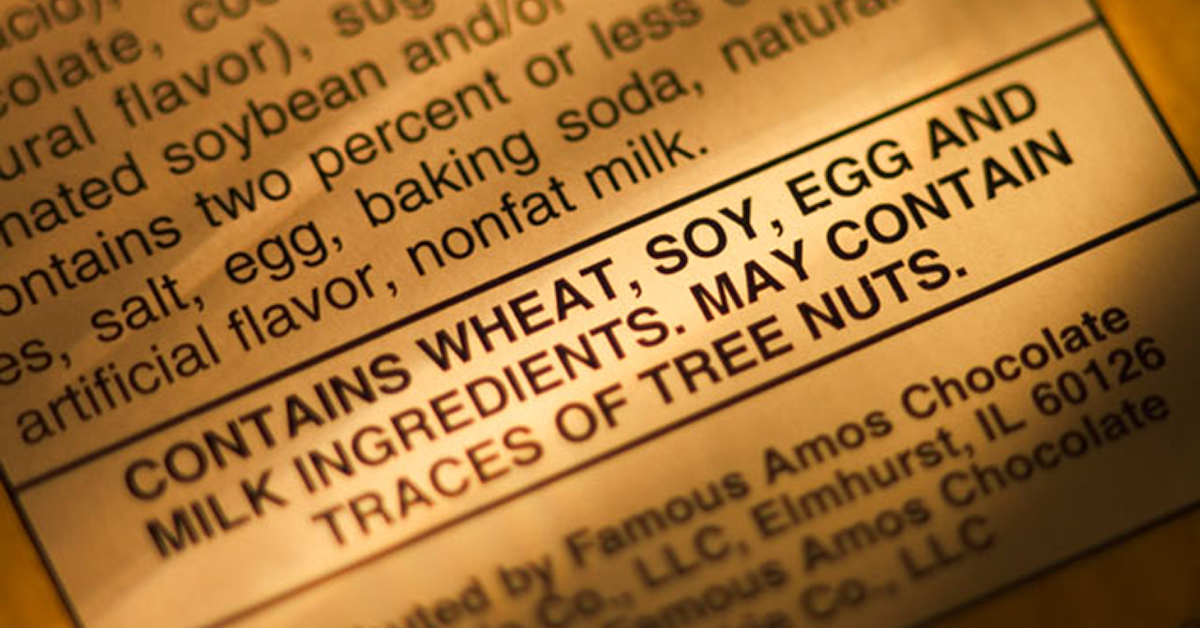Welcome to 2022! You’ve made your resolutions, hung that brand new “World’s Cutest Puppies” calendar, and are ready to start a fresh new year bursting with endless opportunities!
But what hasn’t changed with the new year are the regulations that govern how manufacturers are required to warn you about the potential for allergen content in the food products you buy. In many cases you are flying blind, relying on manufacturers to decide whether and how to disclose the potential for allergen cross-contact in the foods you purchase for your family.
If you’re allergic to one of the “Top 8” allergens (peanuts, tree nuts, milk, eggs, soy, wheat, fish, and crustacean shellfish), you probably know the US Food and Drug Administration (FDA) requires manufacturers to list those ingredients on the label. But what about products that are made on the same equipment containing, say milk, but don’t contain milk as an ingredient? Are manufacturers required to warn you with a statement like “Made on equipment that also processes milk”?
The answer is a resounding “No”: the FDA has nothing to say about those statements known in the industry as “Precautionary Allergen Labeling”, including when they should be used, how they should be worded, or where they should appear.
Some manufacturers include them on certain products, some don’t, and yet others warn for some allergens, say peanuts, and not for others, say soy. The decisions manufacturers make whether to disclose the potential for allergen cross-contact are complex and depend on a large number of considerations.
The safety of the food allergy community depends on closing this enormous loophole as well as others that endanger those that are allergic to foods outside of the Top 8 (soon to become the “Top 9” in 2023 when sesame will be added to the major allergen list.)
At this moment, we have a unique opportunity to effect change to allergen labeling in the US. Legislation currently making its way through Congress known as the Food Labeling Modernization Act is intended to bring labeling requirements up to date, but it mostly addresses nutritional information and regulations regarding gluten. Unfortunately, in its present form, it does not address issues of concern to the allergic community.
That’s where you come in. We have engaged a petition on Change.org demanding Congress incorporate three simple additions to the legislation that will go a long way toward addressing the loopholes that endanger the allergic community.
They are:
Mandate the inclusion of the Contains statement
Although food manufacturers are required to disclose when a top allergen is an ingredient of a product, the disclosure can be made in one of two ways: (1) in the ingredient list by including the name of the food source in parenthesis following the common name, or (2) by specifying the allergen in a Contains statement.
The option leads to considerable ambiguity, often forcing the consumer to read through and parse the entire ingredient list in order to determine whether a major allergen is indeed an ingredient of the product.
Mandating the Contains statement will eliminate this ambiguity by providing a single, reliable place where top allergen ingredients are disclosed.
Example — Contains peanuts, milk.
Mandate the inclusion of a single PAL statement with prescribed wording when top allergens are processed in the facility
Allowing manufacturers to decide when, how, and where to include PAL warnings leads to ambiguity and false consumer confidence that a product is safe from cross-contact with top allergens when such statements are omitted.
Mandating a single precautionary allergen warning with prescribed wording and placement will dispense with much of that ambiguity. We prefer a Top Allergens Processed in Facility statement placed directly after the ingredient list and Contains statement that lists the top allergens that are not ingredients of the product but are processed in the line or facility.
Example — Top Allergens Processed in Facility: eggs, soy, wheat.
Note that manufacturers that take extra care to avoid allergen cross-contact such as by testing finished products for allergen content are free to provide such information on the label, in marketing collateral, and on their websites.
Mandate the disclosure of all ingredients individually
Current regulations allow many ingredients to be hidden under general categories such as spices, natural flavors, and colors provided they meet certain criteria. This practice is especially dangerous for individuals that are allergic to those foods, leaving them with no alternative but to contact the manufacturer to determine whether such foods are ingredients or how they are processed during manufacture.
Furthermore, the cost of these additional requirements would be minimal as they all involve changes to disclosures on the label, not the manufacturing processes themselves.
Will big food companies object? Absolutely: they don’t want the decision to label for potential allergens to be taken from their hands nor do they want to disclose all the ingredients in their products. But in our opinion, the safety of the food allergy community is paramount and far outweighs the objections of manufacturers.
Please click here to sign the petition, but don’t stop there… reach out to your friends, relatives, and colleagues and ask them to sign and promote the petition as well.
Together, we CAN effect change, but we need to do so as a community to have our voices heard.
Sign and Share the Petition to Make Much Needed Changes to Allergy Labeling





